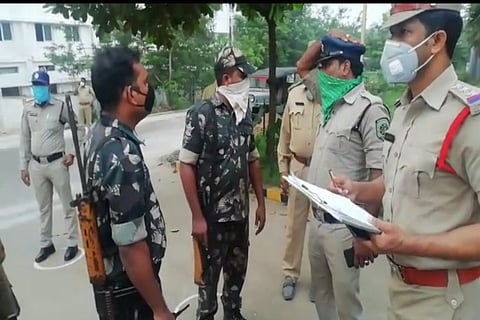

In yet another incident of a gas leak, two persons were killed and four persons were hospitalised in the early hours of Tuesday following a gas leak at Sainor Life Sciences at Jawaharlal Nehru Pharma City in Visakhapatnam's Parawada area.
About 30 people were working in the pharma company during the benzimidazole gas leakage, according to reports.
The deceased have been identified as Narendra and Gowri Shankar. Among the four persons who are availing treatment, the condition of one employee is critical, The Times of India reported. The victims are availing treatment in Gajuwaka.
The reason for the gas leak is yet to be ascertained.
“The situation is under control now. The two persons who died were workers and were present at the leakage site. Gas has not spread anywhere else,” Uday Kumar, an inspector with the Parwada Police Station, was quoted as saying by news agency ANI.
Following the incident, District Collector V Vinay Chand, City Police Commissioner R\K Meena and other officials visited the spot to assess the situation. According to some officials, benzimidazole gas is not much of a danger than styrene gas.
The incident happened just months after the deadly gas leak in LG Polymers unit, on the outskirts of Visakhapatnam. In the incident, which took place on May 7, 12 people were killed and at least 3,000 residents were exposed to the gas toxic Styrene. Besides the residents, 22 animals, which include cattle, were killed in the incident.
The National Green Tribunal committee, which conducted a probe into the tragedy, found fault with the Department of Industries, Factories and Boilers for safety lapses, and with the Visakhapatnam Urban Development Authority (VUDA) for approving residential layouts in close proximity with the hazardous factory.
The NGT committee found that the M6 styrene storage tank was of an old design and the tank had no meters for measuring temperature and pressure at the top of the tank. The tank did not have an interlock system that would trigger the refrigeration unit when temperature increase is detected, which would have forced the system to increase cooling/chilling action and retard the reaction upon detection of a temperature increase, among several other lapses.